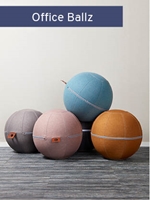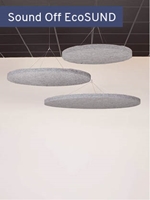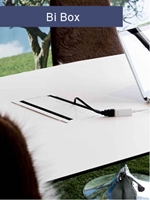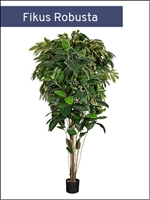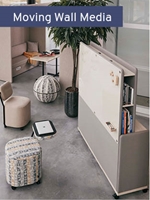


A conference room is an important meeting place where both internal and external discussions and business takes place. Imagine going to a meeting where the room is not prepared, the technology is wonky, the air quality is bad and the interior design boring. This is a place where many hours are spent. It should in the interest of every employer that a meeting can be started at the set time, progress without interruption and that the participants can conclude the meeting with positive results. How should a meeting room best be decorated?
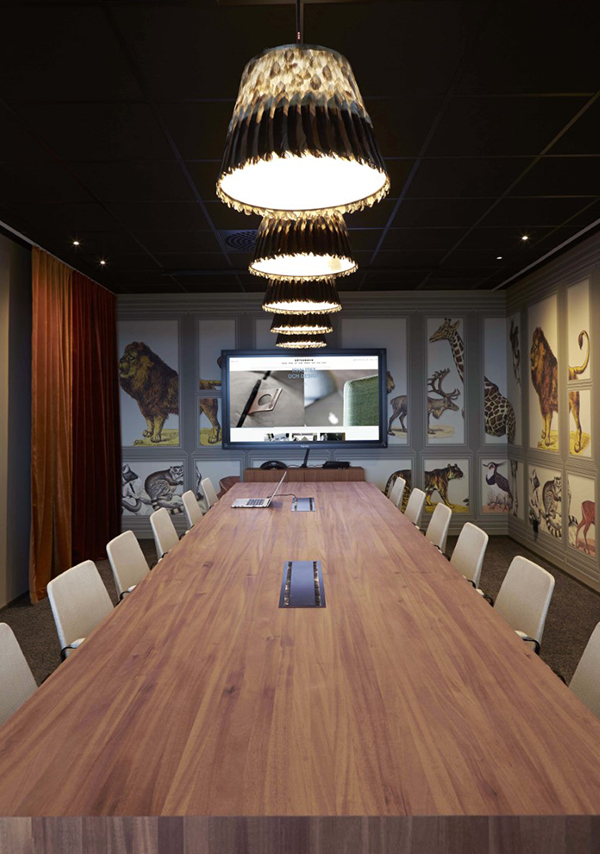
The large conference room
A lot of people gather in a conference room, and everyone who meets there should be able to participate. Tables and chairs are a given, but more furnishings are required for a creative and inspiring working environment.
When choosing a colour scheme and furnishings, we recommend starting from the room or building's integral character, and then keeping to a light and neutral colour palate for the walls in order to give the conference room an impression of space when filled with people.
How often have you sat on an uncomfortable chair in a meeting? Chairs should be comfortable, but not too comfortable. One tip is to provide balance balls as an alternative if people have to sit down for a long time. Changing seating position is good for both the body and for concentration. Therefore, it is also a good idea to offer height adjustable desks. To make the room more flexible, for example in group work, it is advantageous to supply desks that can be connected and disconnected, and moved around.
Nowadays video conferences, large screens and other technical equipment are among the most important things in a conference room, and often the reason that it is booked. Important meetings require properly working technical equipment. No one wants to spend time dealing with malfunctioning technology. Technical cabinets to conceal cabling and leads, a wide selection of cables for presentations, good internet connectivity and a reliable video conference system, are some of our tips on how to how optimise conference room technology.
The sound environment of a conference room is important; meeting participants should not be impeded by poor acoustics. It is fatiguing and can cause headaches. To achieve better acoustics in the room we recommend curtains, wall suspended sound absorbents, textile covered furniture and carpets.
Not all work can or need be done digitally. Therefore, it is advisable to keep a whiteboard or sketch boards with pens in the room. This makes it easy to present drawings and charts. Paper and pencil are also often helpful to increase creativity in meetings.
Light and health are connected, and people tire in dark rooms, - which is something to be avoided at meetings. Ensure that lighting is sufficient by using good general lighting and spotlights that can be switched on when necessary, particularly during the winter months. This is especially important if the conference room does not benefit from windows and incoming daylight.
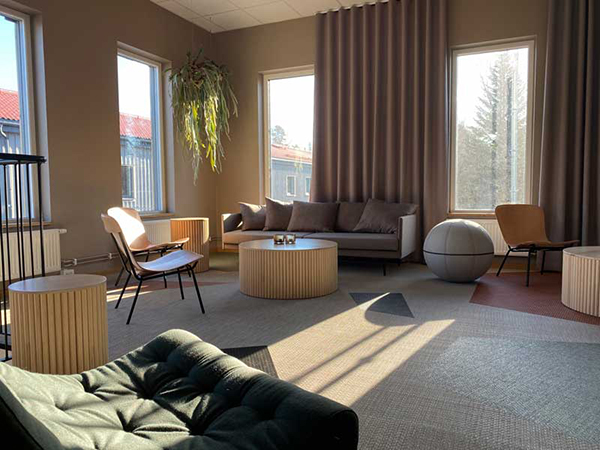
Small meeting rooms
Small meeting rooms are usually used for more confidential, or informal, meetings. The amount of equipment need not be so extensive: smaller tables, fewer chairs, a more simple TV screen.
The ability to remain undisturbed remains important, sound from the meeting room should not be able to pass in or out. Be generous with sound absorbents – confidential employee discussions or new business plans are not something that the rest of the workplace should hear. To be even more shielded from disturbance it should be possible to cover glass doors or glass walls, with curtains or blinds for example.
If daylight is not accessible, which is the case for a lot of meeting rooms, the lighting needs to be good to improve concentration. Have several sources of light, preferably with dimmers, to be able to adjust them depending on what tasks or subjects of conversation will be dealt with. Warm and subdued lighting makes us open and relaxed, whilst deadline work may require brighter lighting to maintain a sharper focus.
A meeting room should be neat and tidy to avoid visual distractions. The interior design must tread that fine line between creativity and concentration, without being too frivolous or boring. A fussy environment makes us stressed, while tidiness has a positive effect with less distraction and increased productivity.
Lower ceiling heights often improve the ability to concentrate on details when working. Muted colours and plants are calming features.
Ensure good ventilation - good air is important to keep the energy and concentration of the meeting participants for a long time.
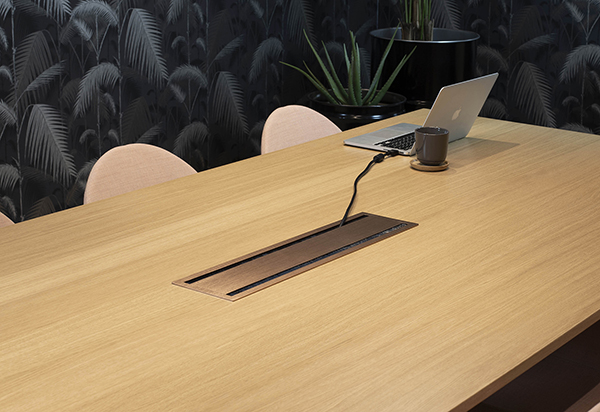
Checklist - keep this in mind when designing large and small meeting rooms
- Good air quality is the most important thing for both small rooms and rooms where lots of people may be present for a long time.
- Technology should work faultlessly to avoid wasting time and bad tempers. A selection of cabling for different computers must be available and a connection to the screen that does not fail is very important.
- Curtains or similar should be used to cover glass doors or windows if the meeting requires it.
- Sound damping material is important to avoid poor acoustics inside the room – and to ensure that anything said remains in the room. It may be that neither those in the meeting, nor those outside it, want what is said in there to be heard.
- Light from windows or functional lighting is important for concentration, and must be sufficient for long periods.




